Strength training is good for everybody’s body. Whether you want to build muscle, tone up, get stronger, improve functionality, enhance athletic performance, or lose weight, strength training can help.
However, did you know there are lots of ways to challenge your muscles, and they’re all similarly effective? You can lift weights, use resistance bands, swing kettlebells, use resistance machines, or do calisthenics or bodyweight exercises.
Of these methods, calisthenics is arguably the most convenient and cost-effective. After all, the main thing you need is a body – and it’s a safe bet that you’ve got one of those. The other thing you need is some space, which, again, you’ve probably got in abundance.
In this article, we explain what calisthenics is, discuss the different styles of calisthenics training, reveal the benefits of following a calisthenics program, and share the 11 best FREE calisthenics programs.
What is Calisthenics Training?
Calisthenics involves harnessing the power of bodyweight training. Classic calisthenic exercises include push-ups, pull-ups, bodyweight squats, lunges, and advanced gymnastic maneuvers like handstands and muscle-ups.
Level Up Your Fitness: Join our 💪 strong community in Fitness Volt Newsletter. Get daily inspiration, expert-backed workouts, nutrition tips, the latest in strength sports, and the support you need to reach your goals. Subscribe for free!
The term “calisthenics” can be traced back to ancient Greece. It’s a fusion of the Greek words “kallos,” meaning beauty, and “sthenos,” meaning strength. Together, they create the phrase “kallos-thenos” or “kalisthenes,” symbolizing “elegant strength” or “graceful exercise.”
Popular globally, calisthenics is not just a fitness trend but a foundational training approach in the military, street workouts, martial arts, and among elite and everyday fitness enthusiasts.
Whether you’re training for fat loss, general fitness, muscle development, or increased strength, you can use calisthenics to achieve your goals.
Not sure if calisthenics is the right workout for you? Consider these pros and cons and then decide!
Pros of Calisthenics:
No need for expensive equipment – most calisthenic exercises require no more than your body and some space. For other exercises, you’ll need a pull-up bar, a bar for dips, and maybe some push-up handles or parallettes.
Either way, you won’t need to spend money on expensive equipment. In fact, you can create a superb calisthenics training area for just a couple hundred dollars, which is less than some gyms charge for a month’s membership.
There are also free calisthenics parks where you can train for free.
A holistic workout – calisthenics doesn’t just build muscle and strength. It also improves flexibility, mobility, balance, and coordination. In short, not only can calisthenics improve how you look, but it’ll also improve how you move and feel. As such, it’s the ideal workout for athletes and those looking to become more athletic.
Suitable for all fitness levels – calisthenics can be adapted to suit any fitness level, from deconditioned beginner to elite expert. There are exercises for all levels, and many of the movements can be modified to make them more accessible or demanding as required.
For example, you can do push-ups with your hands on a tabletop to make them more accessible or with your feet on the same tabletop to make them more challenging.
Freedom to train anywhere and anytime – calisthenics doesn’t tie you down to a specific location. Whether at home, in a park, or traveling, you can continue your workout routine without any hitches. This flexibility makes it much easier to maintain workout consistency, as you’re not as reliant on having access to a specific facility.
Safe and joint-friendly – severe injuries with calisthenics training are rare. After all, there are no heavy weights to get pinned under if you cannot complete a rep. This means you can train to failure without a spotter or squat rack, even if you are alone.
And while any exercise can cause elbow, knee, or shoulder pain, calisthenic exercises are often more joint-friendly than similar movements done with free weights or machines. That’s because you can easily adapt them to match your height and limb length.
Unlike many strength training machines and even some free weight exercises, you can easily change the position of your body to stress your muscles and joints from a different angle. This can help prevent overuse injuries that are sometimes caused by repetitive movements.
Cons of Calisthenics:
Limited overload – the whole point of calisthenics is that you use your body weight for resistance. Your body is your gym! However, that does mean that some exercises won’t be particularly challenging, and you may have to do very high-rep sets to fatigue your muscles.
This is especially true for bilateral leg exercises like lunges and squats. However, switching to unilateral or single-limb exercises will make your workouts much more challenging.
Calisthenics develops a specific type of strength – while calisthenics can build strength, it may not be the best choice for those looking to achieve particular strength goals, such as powerlifting or Olympic weightlifting. Bodyweight exercises may not transfer very well to these more specialist objectives.
Very few isolation exercises – most calisthenic movements involve multiple muscles and joints working together, i.e., compound exercises. However, isolation or single-joint movements are sometimes preferable, particularly for localized hypertrophy. Single-joint exercises allow you to target individual muscles with laser-like precision, making it easier to increase muscle size.
Popular isolation exercises that are hard to replicate with calisthenics include leg extensions, leg curls, cable crossovers, pec decks, lateral raises, dumbbell curls, and triceps pushdowns.
Requires good technique to avoid injury – while calisthenic exercises are generally safer than their closest free weight equivalent, they can still cause injuries when not performed correctly. That’s because you don’t just work the target muscles with calisthenics, but your entire body.
For example, push-ups are a chest exercise, but to do them correctly, you must also use your legs and core while being aware of your posture and alignment. Let any of these things slip, and even the humble push-up can cause injuries.
Remember, calisthenics means beautiful strength, and your form is critical in how safe and effective your workout is.
Progress can be slow – in conventional strength training, progressing from one week to the next is relatively straightforward. That’s because the weight increments are so small. For example, you can go from leg pressing 225 pounds to 230. Such a small increase will barely register.
With calisthenics, your body weight remains mostly unchanged, and you’ll need to focus on doing more reps. Even progressing from ten reps to 11 is a significant increase, and that one rep may take several weeks to achieve.
Calisthenics is not a workout for people in a hurry. However, if you are patient, your hard work will be rewarded.
Requires high levels of motivation – without the structure of a gym environment or the feedback of lifting heavier weights, some people may find it challenging to stay motivated with calisthenics in the long run. Because of this, a lot of exercisers choose to combine calisthenics with other forms of training.
The 11 Best Free Calisthenics Programs
Are you looking for a free calisthenics program? Look no further than these tried-and-tested plans. Review them all to see which one best matches your needs and goals.
1. School of Calisthenics – Free Beginner Calisthenics Program
The School of Calisthenics is a vast resource for all things relating to bodyweight training. There is a lot of free content on this site, but many of the programs are only available to buy. That said, they offer a free seven-day trial of their most popular workout, which is how this program has made it onto our list!
After a week, you should know whether the program is for you or not. Just remember to cancel your subscription if you don’t want to get charged. However, you can cancel anytime after your trial has expired.
Pros:
- Free to access
- Knowledgeable instructors
- Perfect for complete beginners
- Covers basic and skill-based calisthenics
Cons:
- You are limited to seven days before you have to start paying
- The workouts contain lots of clickable links to instructional videos, which can be time-consuming and frustrating
- Not suitable for intermediate or advanced exercisers
- Accessing the program is not straightforward
Find the 7-day free trial here.
2. Bodyweight Training Arena: Ultimate Full Body Workout
Many free calisthenics programs are aimed at beginners. That makes a certain amount of sense, as beginner programs are generally easier to write, which is an important consideration when giving away workouts for free.
The guys at Bodyweight Training Arena have chosen a different path and created an in-depth program aimed at intermediate exercisers. This challenging workout plan will help you build muscle, get stronger, and improve your basic calisthenic skills.
Pros:
- Easy to access
- Completely free
- No sign-up is required (just screenshot the workout)
- A comprehensive full-body workout with plenty of instructions
Cons:
- Doing the same program several times a week will soon become boring
- No progressions/regressions
- A high-rep workout that may be too challenging for some people
- Exercise demos are only available through the app
You can access the program here.
3. Bar Brothers Groningen Beginner Routines
There is no such thing as a free lunch, or so the saying goes. But, judging from this library of beginner calisthenic routines from the Bar Brothers Groningen, they didn’t get the message! With no sign-up, not even your email, you get instant access to 14 different beginner calisthenic routines, including full-body, split, cardio, and core workouts.
The workouts aren’t exactly cutting-edge, but they should be ideal for beginners looking to get started in calisthenics.
Pros:
- 100% free
- No sign-up is required (although you can get a free e-book/PDF if you sign up for their newsletter)
- Workouts are accompanied by video demonstrations
- Lots of different programs to choose from
Cons:
- No obvious way to print out/store the workouts
- Lots of sales links to a paid 12-week calisthenics program
- A lot of text to wade through for what are essentially quite simple workouts
Access the Bar Brothers Groningen Beginner Workouts here.
4. Caliverse App
Currently available for free, the Caliverse App is a veritable library of calisthenic exercises and workouts, many of which are designed for beginners. The app itself looks great and is very easy to use. The workouts are typically four weeks long and are customizable to match your current fitness and abilities. You can also use the app to track your progress, which can be very motivating.
Pros:
- Free to download
- Large library of 300+ exercises, 100+ workouts, and 10+ training plans
- More exercises and workouts are added regularly
- Clear instructions and demonstrations
- Suitable for all levels, from complete beginners to experienced/advanced
Cons:
- Some premium features may be paywalled in the future
Download the Caliverse app here.
5. Bodyweight Training by Antranik
While you must sign up with your email address for full access to this program, if you want to take your bodyweight workouts to the next level, your commitment will be rewarded!
Antranik is a respected fitness personality who combines yoga and calisthenics to develop maximal strength and flexibility. While this program isn’t tailored for beginners, more seasoned exercisers will undoubtedly appreciate the challenge posed by these demanding bodyweight workouts.
Pros:
- A comprehensive strength and flexibility program
- The program is accompanied by YouTube video demos and explanations
- The workouts are progressive and well-designed
- Includes information about rest, recovery, and nutrition
Cons:
- No access without signing up
- Quite low production values
- Not suitable for beginners
- Very text-heavy presentation with lots of links to click for more information
Sign up for this free program here.
6. Reddit Bodyweight Fitness Recommend Routine
The Reddit Bodyweight Fitness Community is a large and growing group of calisthenic enthusiasts. As well as being a great place to swap ideas and gain knowledge, the community created a “recommended routine” that is popular and available for free.
The workout comprises a customizable template into which you slot your favorite calisthenics exercises. As such, it’s suitable for all levels of exerciser, from beginner to advanced. There is also a detailed warm-up routine to follow.
Pros:
- 100% free – you just need a Reddit account
- Uses supersets and trisets to save time
- Fully customizable by changing exercises
- Interactive links for exercise instructions
- There are printable resources for convenience
- Other programs are available, including a minimalist routine for those with less time
Cons:
- A lengthy workout that will take about an hour to complete
- Very text heavy website, and not visually appealing or easy to navigate
- Less of a program and more of a workout guide that’s open to interpretation, so better for those with some experience
View the Reddit Bodyweight Fitness Recommended Routine here
7. The White Coat Trainer Calisthenics Template for Beginners
The White Coat Trainer is actually a couple of doctors who are also into fitness. Their website provides an in-depth guide to getting started in calisthenics, including the essential exercises, how to organize your workouts, best set and rep ranges, and everything else a beginner needs to get started.
However, the free program is actually a downloadable PDF template that lets you construct and then track your own calisthenic workouts. This is a very valuable tool and will make your workouts much more effective. And, of course, there is a beginner workout to follow.
Pros:
- An easy-to-use tool for creating your own calisthenic workouts
- Two different templates for more workout variety
- Editable/printable/savable PDF for convenience
- Makes tracking workouts much easier
Cons:
- Not a cookie-cutter program – you need to create your own workouts using the template provided
- A lead magnet for the premium WCT Home Workout Program
You can find the WCT Calisthenics Template for Beginners here.
8. Madbarz Workout App
Level Up Your Fitness: Join our 💪 strong community in Fitness Volt Newsletter. Get daily inspiration, expert-backed workouts, nutrition tips, the latest in strength sports, and the support you need to reach your goals. Subscribe for free!
Workout apps are like having a personal trainer in your pocket. This app from Madbarz offers free workouts, exercise descriptions, and healthy eating recipes. However, the best content is only available to premium (paid) users. However, the app has enough free information to keep most people happy and decide if they want to upgrade to the premium service.
Pros:
- Over 60 free workouts available
- High-quality content
- Very easy to navigate
- Easy-to-follow infographics for each workout
- Ideal for all levels – from beginners to advanced
Cons:
- The workouts do not form part of a weekly plan, so progression can be difficult
- The best content is only available to premium users
- Some of the workouts are very challenging and not suitable for beginners
You can download the Madbarz app here.
9. Workout Temple: Holistic Approach to Calisthenics
Workout Temple stands out from the rest by blending the principles of calisthenics with mindfulness, martial arts, and body control, offering a holistic approach to physical and mental training. Their mission is rooted in three pillars: body, mind, and spirit. With a commitment to personal transformation, Workout Temple provides more than just a typical calisthenics routine.
Their website contains a wide variety of content, including videos and articles which are tailored to provide guidance and insight into this unique style of training. While some programs might come at a cost, Workout Temple offers a plethora of free resources that can be a great starting point for those looking to explore a different aspect of calisthenics.
Pros:
- Integrates mindfulness principles into calisthenics.
- Comprehensive exercise guides and video tutorials.
- Free resources available on the website.
- Caters to a broader aspect of fitness, encompassing both physical and mental wellness.
Cons:
- Might not be suitable for beginners.
- Limited content compared to dedicated calisthenics platforms.
- The holistic approach might require a longer commitment to see physical results.
Access the Workout Temple resources here.
10. A Shot of Adrenaline: Beastmode 30-Day Calisthenic Workout Plan
As you should be able to tell from the name of this program, the Beastmode 30-Day Calisthenic Workout Plan is NOT designed with beginners in mind. In fact, this is arguably the most challenging workout program on our list.
However, if you are an experienced calisthenic practitioner looking to push your gains to the next level, this could be just the free routine you’ve been waiting for. The workouts are high volume, intense, and involve doing lots of similar exercises back to back. In short, this is gonna hurt!
Pros:
- A 30-day hardcore calisthenic program for more experienced exercisers
- Designed to build muscle and strength with basic calisthenic exercises
- Comes with an 8-week beginner plan for those that are less experienced
- Comes as a downloadable PDF guide
Cons:
- You’ll need to sign up to gain access to the program
- The program is only suitable for people with a good level of fitness and strength. Even then, it may be too demanding for some
- Very few options for program customization
Get the Beastmode 30-day Calisthenic Workout Plan here.
11. Fitness Volt: 5 Simple Exercises – A Routine for Daily Calisthenics Training
Our very own 5 Simple Exercises calisthenics routine introduces readers to five essential calisthenic exercises, which are then performed daily. Training volume varies from day to day to ward off fatigue and overtraining. Each workout is short and should take 20 minutes or less to complete, making this workout ideal for time-pressed exercisers.
And best of all, you don’t need to give up your email address or download anything – it’s available to start immediately! And we wrote it, so you already know it’s brilliant.
Pros:
- A simple workout comprising five basic calisthenic exercises
- No sign-up required
- Full, clear instructions provided
- Tried and tested by hundreds of successful users
- 100% free
Cons:
- Doing the same exercises every day may become repetitive
- The only form of progression is doing more reps
- Not suitable for advanced exercisers
- Daily workouts may be inconvenient for some people
Get more details about this program here.
Basic vs. Skill-Based Calisthenics
Broadly speaking, there are two schools of calisthenics: basic and skill-based. While many calisthenic practitioners practice both styles, others specialize in one or the other. Here’s how these two types of calisthenic workouts compare.
Basic Calisthenics:
Basic (also known as progressive) calisthenics are bodyweight exercises that primarily focus on building strength, endurance, and muscle mass. They form the core of most calisthenics routines and are typically the starting point for beginners. However, more advanced practitioners can use these exercises, too, as many are scalable.
In general, basic calisthenic exercises are very straightforward and can be performed without requiring advanced techniques or significant prior training. They often engage multiple muscle groups simultaneously and can be easily modified to increase or decrease difficulty.
Examples of basic calisthenic exercises include:
- Push-ups
- Pull-ups
- Squats
- Lunges
- Dips
- Leg raises
Skill-Based Calisthenics:
As their name implies, skill-based calisthenic exercises are more advanced and focus on developing specific skills, balance, agility, and coordination. They often require a combination of strength, flexibility, and technique. Many skill-based calisthenic exercises are closely related to gymnastic skills.
Skill-based calisthenic exercises are more intricate and usually have a longer learning curve.
Proper form and technique are crucial, not just for effectiveness but also for safety. Mastery of basic exercises is a prerequisite, and as you advance, you can progress to more challenging variations or entirely new skills.
Examples of skill-based calisthenic exercises include:
- Handstands and handstand push-ups
- Muscle-ups
- Front levers and back levers
- Planche and planche push-ups
- Human flag
- L-sits and V-sits
So, while basic calisthenics exercises lay the foundation for strength and muscle development, skill-based exercises take that foundation and build upon it, pushing the practitioner to achieve feats of balance, agility, and strength combined.
Both types of exercises are valuable and can be included in a well-rounded calisthenics routine, with basic exercises often serving as stepping stones to the more advanced, skill-based movements.
However, if you prefer one type of calisthenics to the other, that’s okay, too. Choose the exercises and programs that a) match your goals and b) that you enjoy. That’s how you’ll get the best from any calisthenic workout.
The Benefits of Following a Program
Many calisthenic practitioners make up their workouts on the spot, doing whatever exercises they feel like on a given day. They may have a vague notion, such as training their upper body, doing a push-based workout, or working on their muscle-ups. But, beyond that, they don’t have a structured plan.
This is not always the best approach.
While flexible programming can work, also known as the instinctive training principle, most people will progress faster and more smoothly by following a more structured routine, such as the free calisthenic programs described later in this article.
The benefits of following a program include the following:
Structured progression – progression is critical for improving your fitness and strength. If you only do sets of ten push-ups, your muscles will only ever be ten push-ups strong. If you want to get stronger, you need to do more push-ups. Gradual increases in workout volume and intensity are crucial; without progression, your fitness and strength will cease to improve.
The best free calisthenic programs provide structured progression, encouraging you to work a little harder from one week to the next. Structured progression will help you avoid plateaus.
Consistency in training – a training plan specifies what exercises you should do on which days. Having a plan and knowing well in advance what workout you’re doing on any given day makes it easier to be consistent.
Missing workouts or training sporadically won’t help you get fitter or more muscular. Consistency is crucial for optimal progress. Committing to a calisthenics program will help keep you on the path to better fitness and health.
Ensuring a balanced workout targeting all muscle groups – it’s all too easy to build your workouts around the exercises you enjoy and are good at, neglecting those movements you like less. This can create muscle imbalances, which could affect your appearance and functionality. Ideally, all major muscle groups should be developed equally.
Well-designed calisthenic programs should provide balanced workouts that target all muscle groups. For example, for every upper-body pushing exercise, there should be a pulling exercise in the same plane of movement.
Less planning required – while there is nothing wrong with writing your own workouts, doing so takes knowledge, skill, and time. While you may be able to hire a trainer to help you create your program, doing so can be expensive.
A free program eliminates all these issues and means you can start your calisthenic journey as soon as you download your chosen plan. Such instant access can be very appealing.
Of course, there are a few drawbacks you need to consider, too:
Programs are not specific to your needs – any program not explicitly written for you won’t account for your abilities and address your needs. Instead, cookie-cutter programs are written for population groups, e.g., beginners, those looking to lose weight, or people who want to learn the muscle-up.
As such, you may need to research several programs until you find the one that best meets your needs and goals. Even then, you may make some modifications to ensure it’s perfect.
No live feedback or coaching – even a great program won’t produce results if you don’t follow it correctly. A lack of feedback and coaching could mean you won’t reap the benefits of your chosen workout simply because you aren’t performing the exercises correctly. Beginners are especially liable to make mistakes, which, if uncorrected, will undermine their progress.
Most programs are only designed to last a few weeks – most calisthenics programs have a lifespan of four to eight weeks. After that, either they run out of progressions, or the practitioner will outgrow the plan’s usefulness. Sticking with any program – even a good one – beyond this point will hurt your progress.
That means you’ll always need to be on the lookout for your next program, even if you are enjoying the one you’re on.
Some programs are better than others – it takes experience to tell the difference between a safe, effective workout plan and one that’s less useful. As the expression goes, you can’t judge a book by its cover, and programs with great-looking graphics and lots of positive reviews can still be poorly written.
So, don’t just pick the first free calisthenics program you find. Instead, compare a few to find the one that is right for your fitness and goals and is written by an expert with a proven track record.
Calisthenics Programs FAQs
Do you have a question about any of these free calisthenics programs or bodyweight training in general? No problem, because we’ve got the answers!
1. Can I make changes to any of these free calisthenic programs?
While you can make changes to these programs, you should try to do the workouts as they are written if possible. After all, the designers wrote them that way for a reason, and even a small change could unbalance the entire plan.
That said, if you cannot do any of the exercises, maybe because of a lack of equipment, then make whatever changes you deem necessary. However, try to stay true to the spirit of the program, and don’t just replace an exercise because you find it hard. After all, it’s those challenging exercises that drive your progress.
2. What happens to my email address after I sign up for a free calisthenics program?
Many free calisthenics programs are only available by email, so you’ll need to share your email address to access them. Once they have your email address, the person or company you gave it to will probably continue to send you emails, newsletters, and adverts until you tell them not to.
One way around this is to use an email address you don’t use much, so it won’t matter if you are bombarded with unwanted emails. Alternatively, once you’ve got your PDF, unsubscribe from any future emails or block the sender.
That said, many of these companies provide very valuable services, which you may find valuable, so give them a couple of weeks before deciding whether to cut them off or not.
3. Is calisthenic training safe?
Compared to lifting heavy barbells and dumbbells, calisthenics training is very safe. After all, there are no weights to drop on you if you cannot complete a rep. The exercises themselves are usually very joint-friendly and can be modified to suit your height, limb length, and weight. Read more about common bodybuilding injuries and how to avoid them here.
That said, any exercises performed incorrectly can cause injury, and that includes bodyweight training. Skill-based movements like handstands and front levers are especially risky.
So, perform your chosen exercises with the best form you can muster, and regress any exercises you cannot do correctly.
4. What is the best diet for calisthenic training?
There is no official calisthenics diet. Instead, you should align your diet to your training goal. Create a calorie surplus and consume more protein to build muscle, or lower your calorie, carbohydrate, and fat intake to lose fat. Eating clean is also a good idea, keeping your junk and processed food intake to a minimum. Focus on natural foods that are high in nutrients but low in calories.
In other words, the best diet for calisthenics is the one that matches your fitness goal and that you can stick to. Quick-fix fad diets are not the solution!
5. Can you really build muscle with calisthenics?
Your body is amazing. It can lift heavy weights, run long distances, and perform feats of gymnastics, all while automatically regulating your temperature and heart rate. However, as clever as your body is, it cannot easily distinguish between lifting a heavy barbell, using a resistance training machine, or doing chin-ups.
In fact, providing you work hard and consistently, your body will successfully adapt to any type of workout, including calisthenics.
Not convinced that bodyweight training builds muscle? Check out the upper body development of elite gymnasts for proof!
So, long answer short, yes – you CAN build muscle with calisthenics.
More on Calisthenics:
- Best Calisthenics Triceps Exercises
- The 12 Best Calisthenics Biceps Exercises and Workout
- Hardcore Calisthenics Arm Workout To Build Muscle Mass and Strength
- Calisthenic Shoulder Exercises and Workout
- The Best Calisthenic Leg Workout
- A Routine for Daily Calisthenics Training
- Weighted Calisthenics Best Exercises and Workouts
- Calisthenics Back Workout for Size and Strength
- Savage Calisthenics Abs Workouts For Beast Gains (All Levels)
- Calisthenics Workout Plan: A Beginner’s Guide
Closing Thoughts
Calisthenics is one of the most efficient, cost-effective, and convenient workout methods around. Whatever your fitness goal is, exercises like push-ups, pistols, pull-ups, and planks can get you there.
However, it’ll take more than a few random sets and workouts to gain muscle and strength with calisthenics – you need a plan! Yes, you could write your own, but that takes time and effort, and buying a program can be costly.
The good news is there are plenty of free calisthenic plans available, and we’ve reviewed 11 of the best here.
So, review each one to determine which program is best for your needs and goals. Some are perfect for beginners, while others are more intense and ideal for advanced exercisers.
Whichever one you choose, stick with it for a few weeks to give it time to work. Changing programs every week will undermine your progress. And providing you work hard and are consistent, even a less-than-perfect program will produce noticeable results.

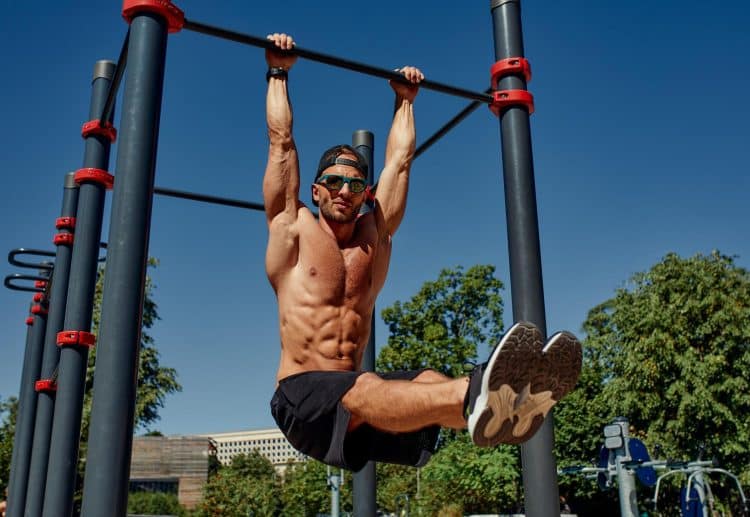

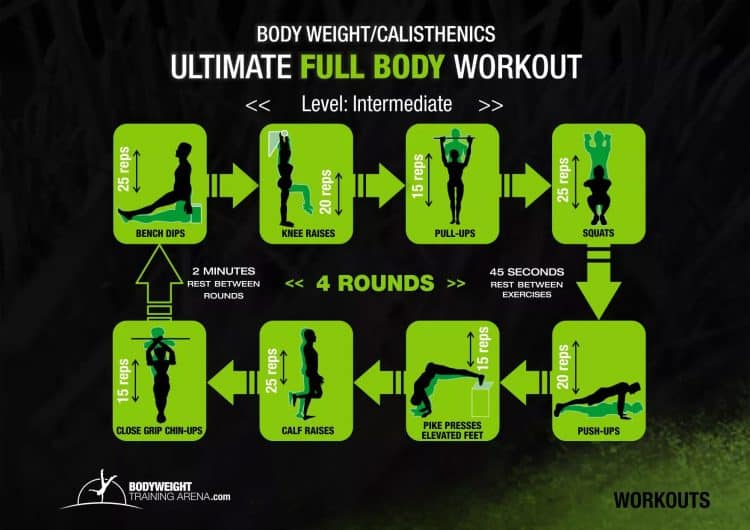

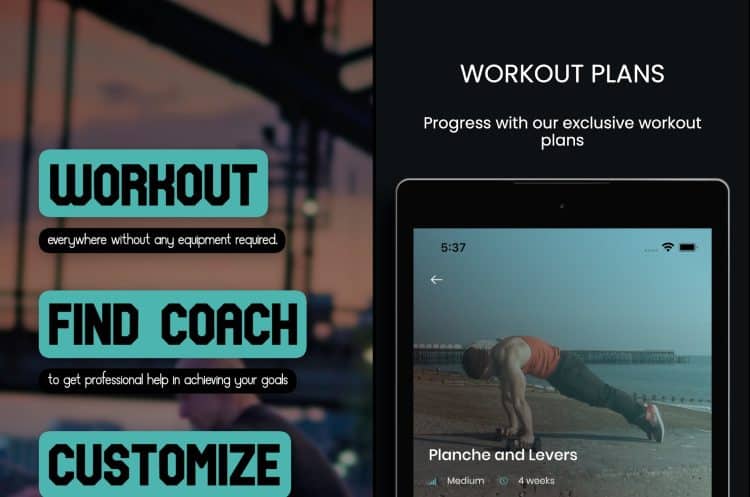
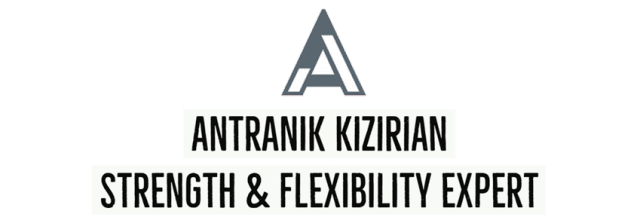
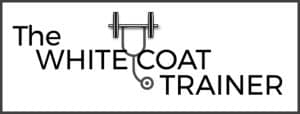
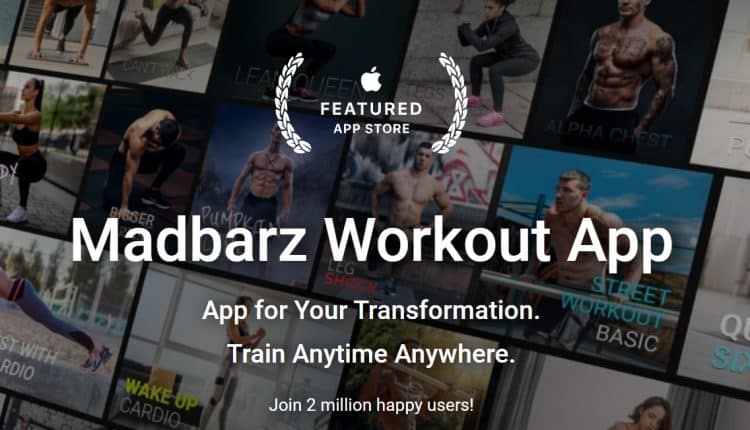
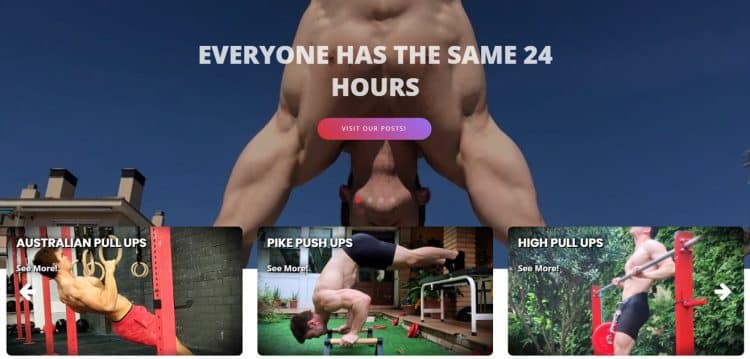

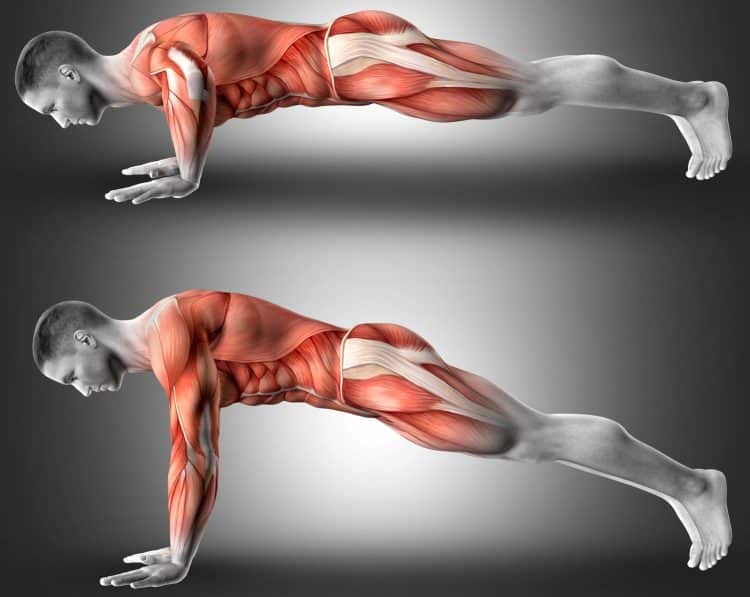








Y’all should check out HybridCalisthenics.com. Like, seriously, I was super surprised to not see it on this list
Absolutely free, zero sign ups, videos for every move, an insane amount of progressions and regressions so it reaches everyone from super beginner to crazy advanced. Also, the weekly plan takes only minutes a day to complete. Truly, go check it out. He also has some videos and sorts on YouTube if you want to know more.
Thanks for sharing – Hybrid Calisthenics didn’t come up in our research, which is probably more of an SEO issue than a reflection on the program. I’ve actually watched several of Hampton’s YouTube videos in the past and found them to be very useful.
Hopefully this reply will give people the opportunity to check out this program.